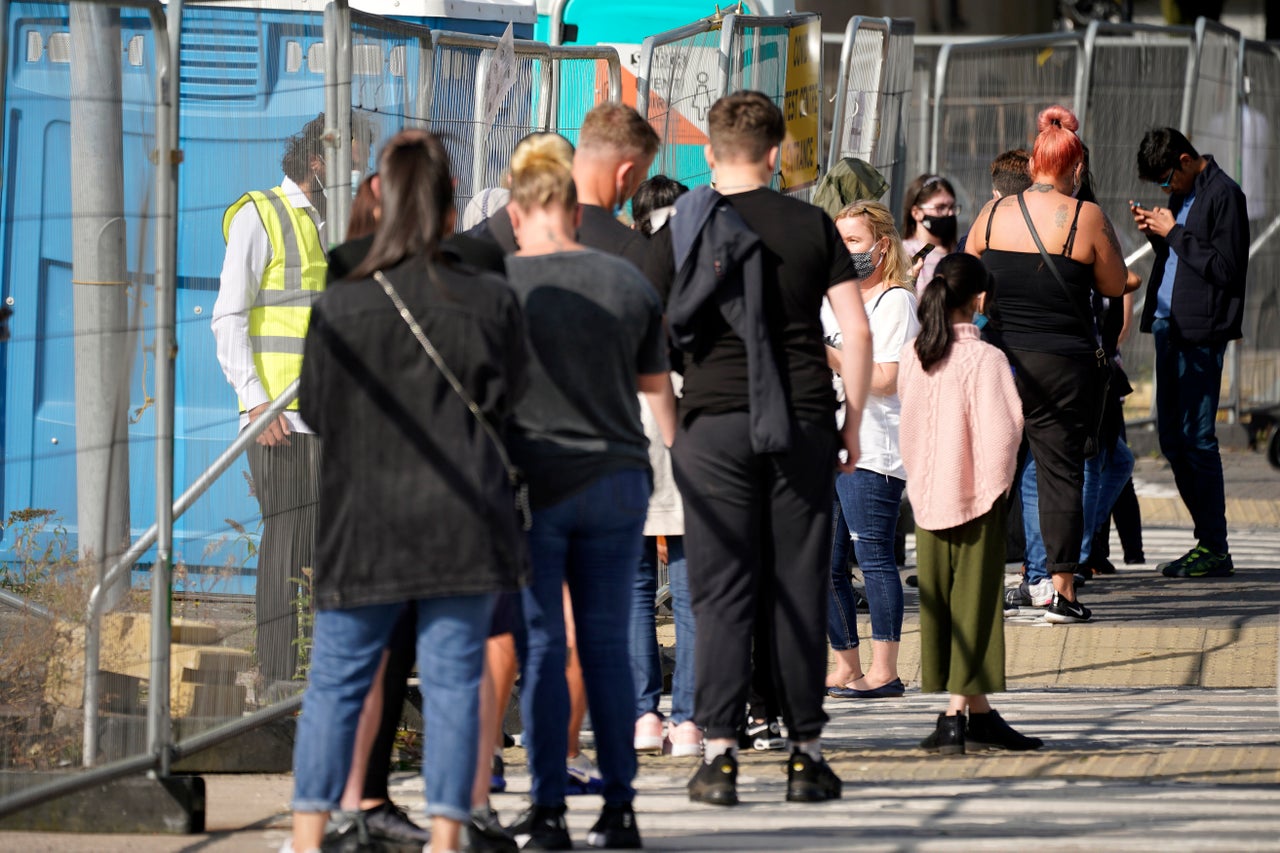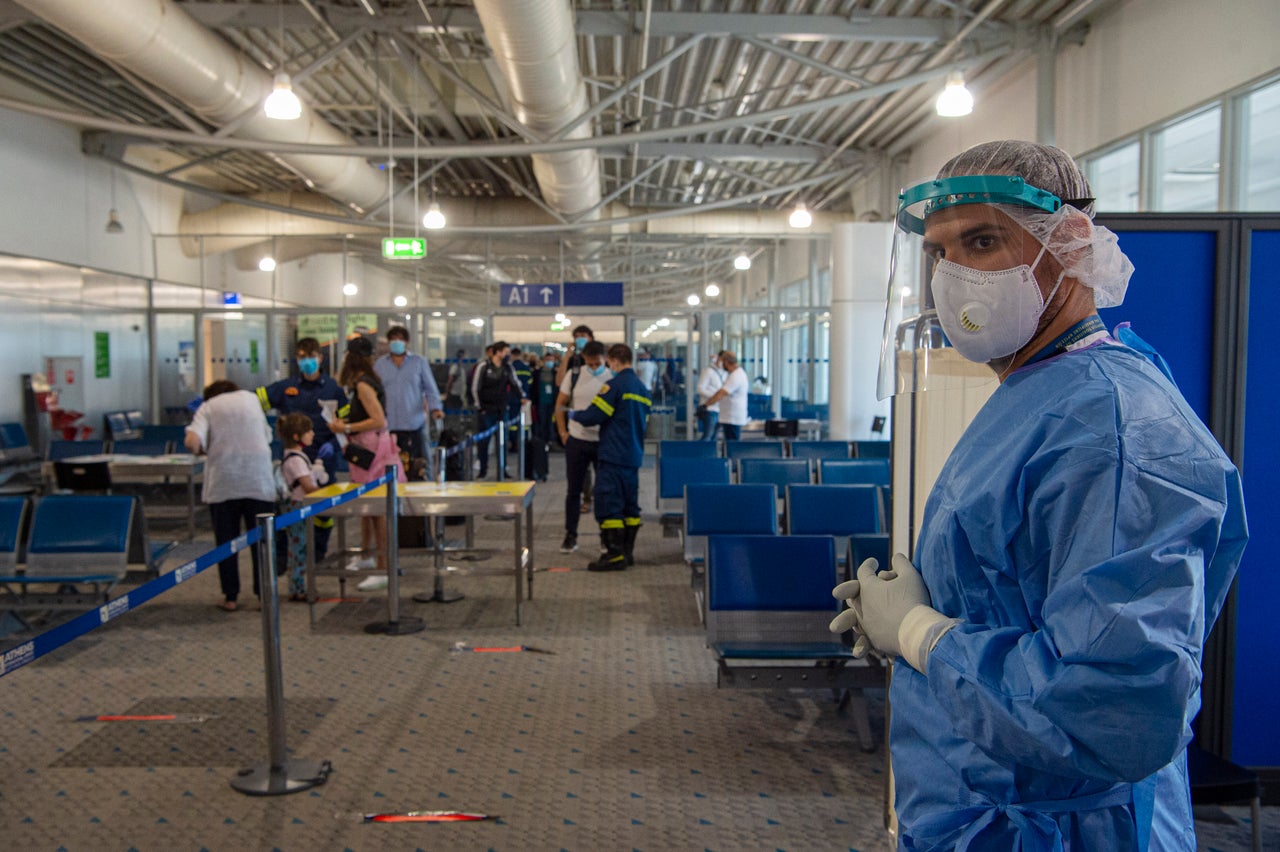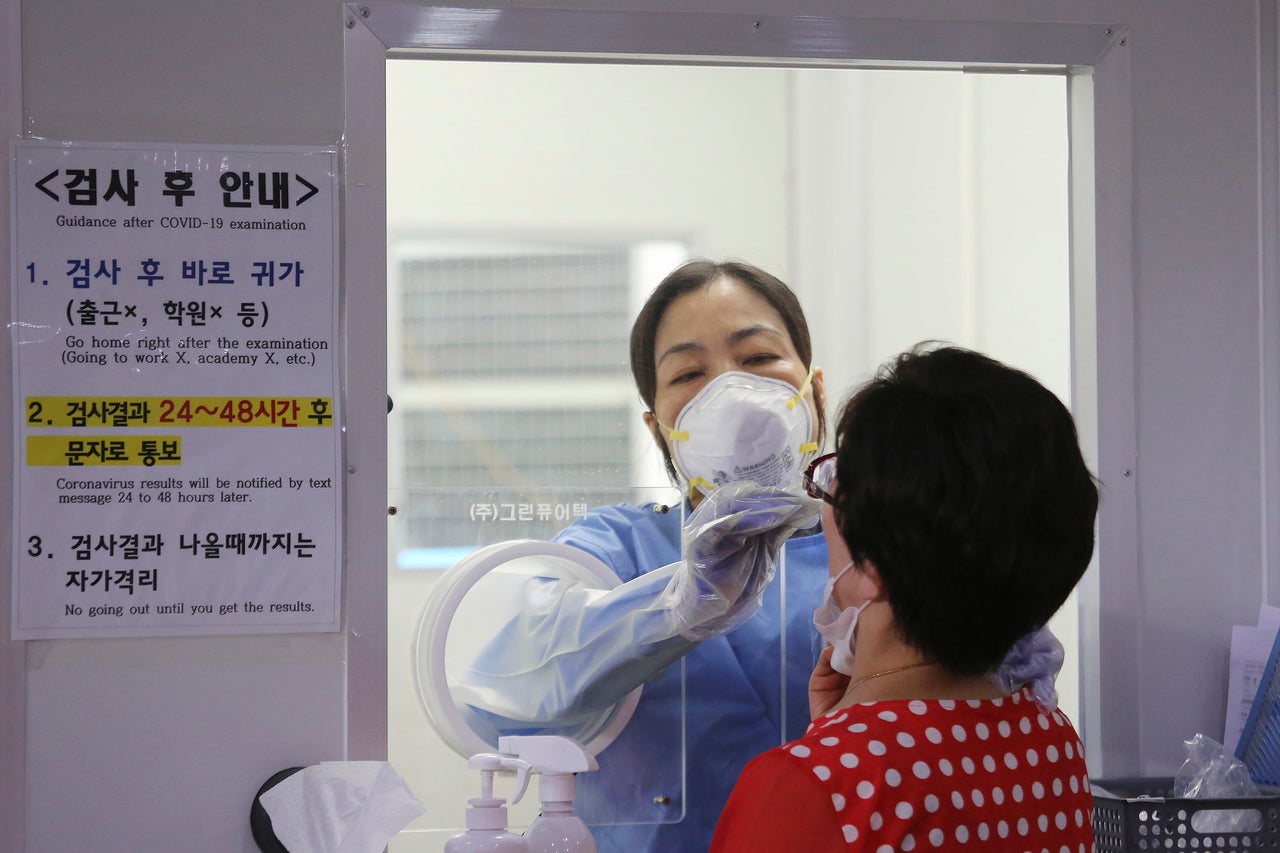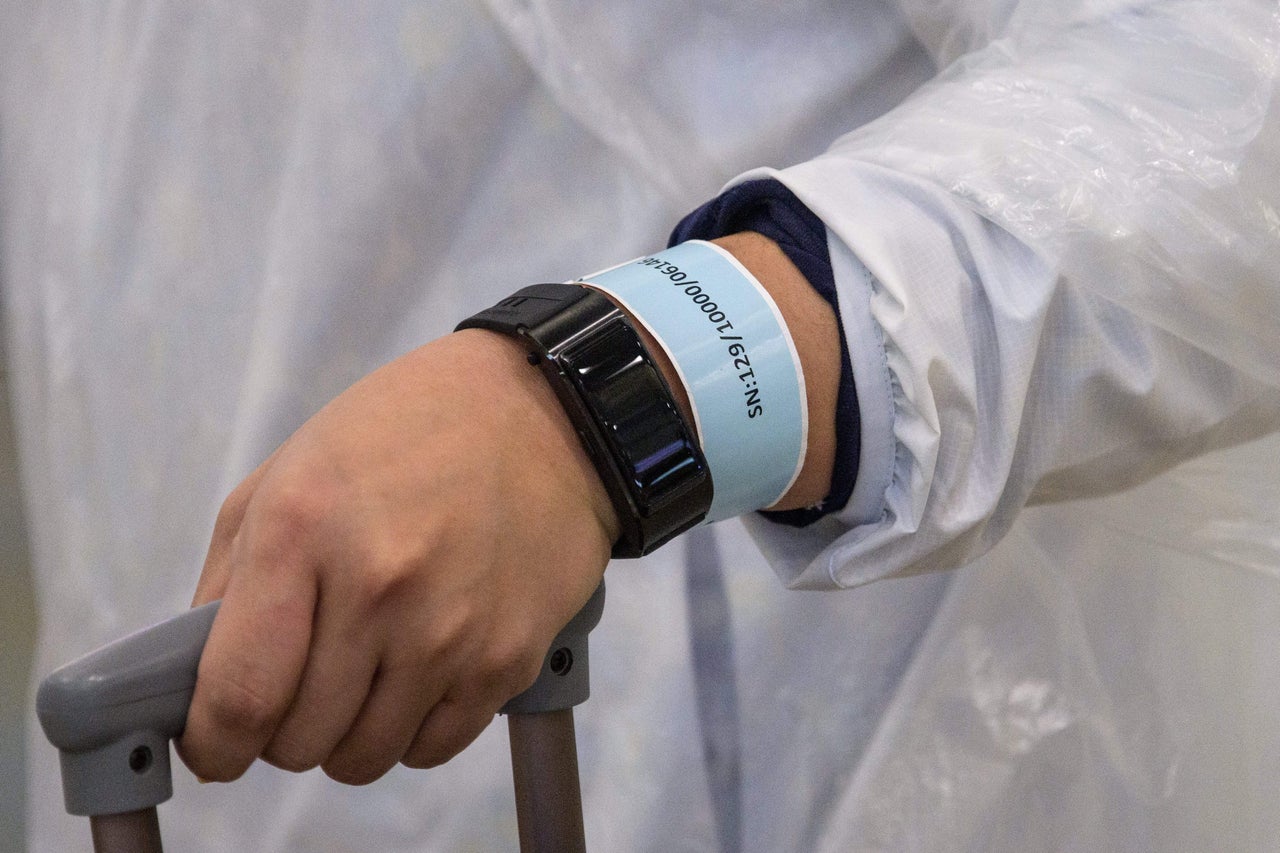“We have growing confidence that we will have a test, track and trace operation that will be world-beating and yes, it will be in place by June 1.”
These were the words of Boris Johnson, during PMQ’s on May 20 this year.
More than four months have passed since the PM’s bold statement. Since then, the UK’s total Covid-19 death toll has crept above 42,000.
Over the weekend, the latest blunder in the test and trace system was revealed – a technical glitch that meant that almost 16,000 cases of coronavirus went unreported.
If that wasn’t bad enough, the mistake meant that the close contacts of people with the virus were not immediately followed up and told to self-isolate.
But that’s not all – in the last few weeks, reports have abounded of an acute shortage of local testing availability – leading to NHS staff shortages and the public facing lengthy delays.
Huge backlogs of swabs have forced overstretched laboratories to send tests to Italy and Germany for processing, and people have described travelling hundreds of miles to get their children tested. Last month, the director of NHS Test and Trace issued an apology after people were unable to access tests.
The NHS Test and Trace service was launched in May, but evidence suggests contact tracing in the UK is not working – it’s getting worse and worse.
Just last week figures showed only 71.6% of “close contacts” are actually being reached, while testing turnaround times are also well short of the 100% within 24 hours target. In September, Johnson admitted to MPs at the commons liaison committee that the situation was not “ideal”.
Others have also been swift to point out the glaring differences when arriving in other countries:
So how does the system in the UK – which has the fifth-highest number of coronavirus deaths – compare? Perhaps surprisingly – aside from some notable exceptions, the test and trace picture in many other countries isn’t much better – especially in European countries where they have been forced to ration tests and urgently re-think failing contact tracing systems.
We spoke to HuffPost editors around the world to find out.
How easy is it to obtain a test for Covid-19?
In the UK, anyone showing symptoms of coronavirus – a high temperature, a new, continuous cough and a loss or change to a person’s sense of smell or taste – is eligible to take a test. Although many testing sites have been virtually empty, people around the country have reported being turned away due to problems with capacity at laboratories.
The eligibility policy for tests is similar in European countries such as Spain, and Greece. In Italy, people must receive a GP’s prescription in order to get a test, unless they are a key worker.
In Canada, anyone can get a test – even asymptomatic people. The catch right now, especially in the last few weeks, is that case counts are on the rise which means a higher demand for testing. In places like Toronto, Ottawa and Montreal, people are reporting four to six hour waits to get tested.

In the US, it depends on where you live. New York, which has the highest number of Covid-19 fatalities, is asking all of its residents to get tested now, regardless of whether they have symptoms or not. In Alabama, only those who are showing symptoms have been told to get tested.
There have been no reported testing shortages in Australia – in fact, our editor in Sydney said there were cases where people have been able to order multiple tests in a single week.
How quickly do people receive results?
The NHS says you should receive results within 72 hours, but there are reports across the country of people – including those in care homes – having to wait at least four days and in some cases, more than a week.
Similar reports of people having to wait for days to more than a week for results have been seen in Spain, whose health ministry says residents should receive results within 48 hours. In Italy, there have been cases of people forced to wait for almost two weeks for results.
A new survey in the US showed the vast majority (63%) of people who are tested are not receiving their results within one to two days recommended by public health experts to contain the spread of Covid-19. A tenth of those surveyed said it took more than 10 days to get their test results back.
In Australia, results are received via text within 48 hours although the turnaround is often much quicker.
What about airport testing?
Visitors to the UK are not required to take any tests upon arrival. Heathrow has been trialling its own testing facility, which would see travellers given a result 24 hours of arriving in the country, but the government has not yet given it the go-ahead.
Some countries, such as Spain, are also yet to introduce airport testing. But in many others, it has already become the norm. In Italy, passengers arriving from 17 countries considered most at risk (including Spain, Croatia and Greece) are given mandatory testing at the airport. Visitors travelling from high risk countries into France are encouraged to take a test prior to departure; those who do not are subject to a two-week quarantine period.

On September 10, the US government ended its programme of screening international travellers after it said the system was ineffective because so many people who transmit Covid-19 do not show symptoms.
Arrivals in Canada are required to undergo a strict 14-day quarantine. Government officials are taking this pretty seriously, doing random spot-checks on people during their quarantine period, both in-person and by phone.
What are the problems currently being faced with testing?
Since Boris Johnson’s pledge to have a “world-beating” system to test, track and trace for coronavirus from June 1, the government has overseen a string of embarrassing hurdles – from dismal “contact tracing” numbers, to people up and down the country being blocked from even securing a test. Although there are about 400 test centres across the UK, many people have reported not being able to get an appointment due to problems with capacity at testing laboratories. Leading doctors have pointed the finger at the government outsourcing much of this to private companies.
At the end of September, government figures showed only 69.4% of contacts were reached and asked to self-isolate. Hospital bosses have said they have staff who have been unable to come into work due to problems with securing a test.
Although Spain has increased the percentage of tests done week by week, the figures vary considerably depending on each region. Contact tracing has also been widely criticised, with many people have reported having problems receiving their results.
In Italy, the government has stepped up its testing efforts after one of the most severe lockdowns in Europe. With the opening of schools, there have been demands to increase the number of tests from 100,000 to 300,000-400,000 a day. While French authorities have largely met their testing targets, the country has faced difficulties with contract tracing, although the reasons for this are not yet clear.
The Australian government has largely lived up to its promise on testing and there have been no significant delays since the beginning of the pandemic. The country has reported about 27,150 coronavirus cases and 894 deaths, which is well below the infection and death rates of other developed countries.
Last month, the US set a one-day record with more than 1 million tests, according to data from the Covid Tracking Project. But Donald Trump’s promise that “anyone who wants a test, gets a test” is far from being realised – nationwide testing shortages have led to reports of people sleeping in their cars overnight to wait for tests.
How many tests have been carried out?
At the start of September, Boris Johnson claimed the UK has carried out “more tests than any other country”. Data collected by the European Centre for Disease Prevention and Control (ECDC) show this to be true. According to Our World in Data, India and the US are leading in the number of daily tests but as its research project manager Joe Hasell explains, the number of Covid-19 tests a country carries out is a poor indicator of how well it is dealing with the virus.
“It’s a really unhelpful figure because it doesn’t really tell you anything. It’s not about how much testing you’re doing, but whether you’re testing enough – and enough is relative to the scale of the outbreak,” he told HuffPost UK.
What we should be looking at instead is the share of positive cases in each country – the proportion of all tests conducted that come back positive. The positivity rate indicates the level of testing relative to the size of the outbreak; according to the WHO, a positivity rate of less than 5% is an indicator that the epidemic is under control in a country. In September, the UK’s positive rate was at 1.4%.
“Currently we are still looking alright, pretty good compared to our European peers,” Hasell said at the . “The real question is what the UK is doing right now to make sure we don’t follow the path that we’ve seen in Spain, for instance.
“Things may look ok right now, but the truth is that it’s very fragile. What is so hard to get into one’s head is how quickly things change. Basing our opinion on what’s happened today or yesterday or last week is not enough, we have to think about what to do if cases double and double, and double again.”
The national success stories: South Korea
South Korea, Hong Kong and Germany were all both praised for their initial responses to control the spread of coronavirus within their borders.
Although South Korea was one of the first countries to experience a Covid-19 outbreak, it was able to keep the number of cases and deaths down without imposing the stricter lockdown measures adopted by the UK. As soon as the first confirmed case of coronavirus was recorded, the country focused on preparing for large-scale testing and within the first days of February had shifted its policy to open public testing available to asymptomatic people. Hundreds of testing centres were set up to screen people outside of the health system, with testing capacity reaching 15,000 to 20,000 tests per day.

Screening clinics were set up outside entrances of hospitals, so infected people were prevented from entering hospitals and instead told to return home and self-quarantine. Drive-through and phone-booth style testing centres allowed health care workers to test people safely. By late March, the country had performed 300,000 tests.
Contact tracing was employed using the classic patient interview and well as accessing data including GPS data from mobile phones, credit card transactions and CCTV footage. Each person arriving from overseas is put under a mandatory 14-day quarantine and was required to download an app on which they reported their symptoms and temperature on a daily basis, and all foreigners are quarantined at a government facility with meals delivered to their doors to avoid any contact.
To date, 422 people have died from Covid-19 in South Korea – out of the country’s population of more than 51 million.
Hong Kong
Until July, Hong Kong was considered a poster child in its handling of the pandemic, managing to keep infection rates down and avoiding any extreme lockdown measures. Since March, all overseas arrivals to Hong Kong have been required to undergo a test and must wait in a restricted area in the airport until they are given their results. If they cannot receive their results on the same day as their arrival (e.g. if they arrive at night), then they are taken to a hotel by government coaches and allowed to leave once their test results have come back negative.
All passengers are given an electronic tracker wristband at the airport and must undergo a mandatory 14-day quarantine. The wristband contains a unique QR code which is connected to a phone app called StayHomeSafe. Using geofencing technology, the tracker will alert authorities if a user breaches quarantine by leaving their home. Anyone violating their quarantine could face up to six months in prison and a fine of up to HK$25,000 (£2,500).

Between September 1 and 14, Hong Kong rolled out a mass Covid-19 testing programme in which everyone with an identity card was eligible for a free voluntary test, with the exception of children under the age of six and people suffering from nasal and throat illnesses (as the test involves taking samples from those regions). The government had hoped 5 million people would take part in the mass testing scheme but in the end only 1.78 million were tested – about a quarter of the territory’s 7.5 million population. Previously the city had been conducting free mass testing in high-risk groups such as care workers, taxi drivers, property management employees and restaurant workers.
Critics have said the government’s decision to exempt several groups of people from testing and quarantining – including aircrew and company executives – may have contributed to the more serious third wave. Medical experts also cast doubt on the effectiveness of the government’s mass testing scheme, saying more focus should be directed on testing high-risk groups such as the elderly and residents of care homes where outbreaks have occurred. The scheme cost HK$530 million (£53 million) for taxpayers and only 42 carriers were identified, making up 0.0018% of the total number of people tested.
There have also been fears the tests could be used to collect DNA samples and personal data and shared with the mainland. Pro-democracy activist Joshua Wong urged people to boycott the voluntary testing, claiming the plan paved the way for a “China-style surveillance regime”. The Hong Kong government has insisted all personal details and specimens would be kept in the city.
Hong Kong entered the third wave of the pandemic in early July, but for now it appears to have brought the virus under control. The number of new daily cases has fallen substantially from triple digits a few weeks ago to single or low double-digits figures. Despite its close ties with mainland China, the city has managed to keep its cases and deaths under relative control – so far there have been just over 5,100 confirmed cases of Covid-19 and 105 deaths.
Germany
First promised at the height of lockdown, the long-awaited NHS coronavirus contact-tracing app is expected to be launched in England and Wales on September 24, and will allow people to scan QR codes when visiting hospitality venues as a way to check-in.
But in June, Germany launched its coronavirus app – named Corona-Warn-App – which uses Bluetooth short-range radio to measure close contacts between people and issues a warning if one of them later tests positive for Covid-19. To date more than 18 million people – over 20% of its population – have downloaded the app, which has been deemed such a success that it has advised other countries on how to build their own. The number of downloads is crucial to the success of a contact tracing app; the more people who have it installed, the more likely you are to detect an infection.
Germany has also won praise for its early establishment of testing capabilities and was a leader in tests per confirmed case in the European Union. Labs were allowed to produce their own test kits, which kept the number of deaths relatively low and prevented the country’s health care system from being overwhelmed. Older people were tested more often than younger age groups, and infection rates were successfully managed in hospitals and care homes. A combination of widespread testing and an early lockdown allowed much of the economy to reopen sooner than the UK, but the number of cases have been on the rise.
HuffPost editors and journalists from Spain, Italy, Greece, France, Australia, South Korea and Canada contributed to this report.
